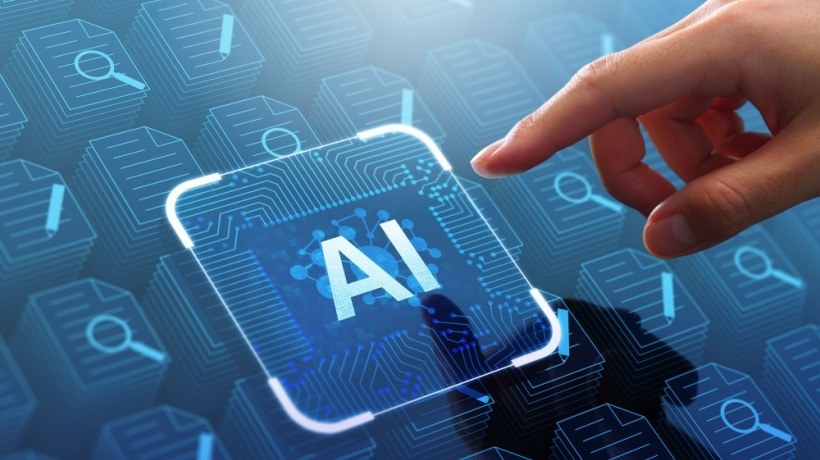Adaptive learning fed by AI for employee training
Companies are increasingly turning to technology to meet the challenges of workforce training at the rapidly evolving workplace today. An innovative solution to win a significant traction is adaptive learning powered by artificial intelligence (Ai). Adaptive learning adapts educational experiences to the needs of each learner, using AI data and algorithms to adjust the content, pace and delivery of learning equipment. This approach turns out to be changing the situation in employee training, especially when companies are looking for greater efficiency, commitment and performance results. This article will explore the concept of adaptive learning with artificial intelligence, its advantages and disadvantages, and how organizations can use its potential to create personalized and impactful training programs.
What is adaptive learning with artificial intelligence?
Basically, adaptive learning refers to an educational method that uses algorithms and an AI to adjust the learning experience according to the progress, performance and needs of the learner. By analyzing the data in real time, adaptive learning systems can identify knowledge gaps, strength areas and individual learning styles. The AI adapts the training equipment according to this data to suit better at the rate and the preferences of the learner.
For example, suppose that an employee is struggling with a specific concept in a compliance training program. In this case, the system can offer additional resources or crop the lesson to better resonate with the learning style of the employee. Conversely, if an employee excels in a particular field, the system can accelerate its learning path, offering more advanced content.
How adaptive learning with AI works in employee training
Data collection and analysis
Adaptive learning platforms permanently collect data on the actions, responses and levels of engagement of the learner during the course. The AI system monitors measures such as quiz results, time spent on modules and interactions with learning content.
Real -time adjustment
The system makes real -time decisions on the content to be provided according to the data collected. This could mean providing corrective content for an employee who has trouble or contesting content for someone who progresses quickly.
Personalized learning path
Each employee receives a personalized learning path. The AI can suggest specific resources (videos, articles, quiz) and activities, ensuring that the employee focuses on the areas that need attention rather than spending time on the content they have already mastered.
Relocation and continuous strengthening
Adaptive learning guarantees continuous feedback. As employees are growing, the system can highlight the areas of improvement and suggest specific learning actions to improve performance, which makes training more efficient and less long.
For the advantages and disadvantages associated with adaptive learning to AI
Pros
- Personalized learning experience
Adaptive learning with AI allows highly personalized learning experiences, adapting content to the individual needs of each employee, learning style and rhythm. This guarantees that each learner takes the best party from the training without feeling outdated or bored. - Increased commitment and retention
ADF adaptive learning increases commitment and retention rate By adjusting the content to be relevant and opportune. Learners are more likely to remain committed when the equipment is adapted to their current level of understanding and interest. - Faster skills development
With personalized learning paths, employees can acquire new skills at their own pace, focusing on areas that need improvement while progressing quickly in the fields they have already controlled. This accelerates the learning process and reduces the time required to achieve skills. - Economy
Adaptive apprenticeship platforms fed by AI can reduce costs associated with traditional training methods, such as instructors, printed documents and in-depth general costs. In addition, it reduces the need for repetitive training by identifying and immediately filling the gaps in knowledge. - Real -time data and information
HR managers and professionals acquire real -time information on employee's progress, which allows them to quickly identify gaps and areas to be improved. These ideas can guide talent development strategies, which makes training more efficient and more focused on. - Scalability
Adaptive learning platforms are scalable. Once installed, they can be used for a wide range of employees, whatever their geographic location, which makes them ideal for businesses with a distributed workforce. This scalability can also be adapted to different departments and roles.
Disadvantages of adaptive learning with AI
- Initial configuration costs
The initial cost of the development or integration of adaptive learning platforms powered by AI can be high. Companies may need to invest in sophisticated software, infrastructure and AI development, which can be an obstacle, especially for small organizations. - Data overload potential
Although the AI data -based approach offers valuable information, managing this large amount of data can overwhelm HR teams. Ensure that the data is interpreted properly and used to guide decisions require qualified personnel and analysis tools. - Lack of human interaction
Although adaptive learning platforms effectively provide personalized content, they do not have the human touch that can be important for certain learning results. Employees can miss the collaboration or advice of human instructors, which can sometimes be essential to the learning process. - Privacy and data security in data
Adaptive learning strongly based on data collection, there are confidentiality and security problems linked to employee data. Organizations must ensure that they comply with regulations such as GDPR and CCPA in the United States to protect sensitive information. - Technological dependence
Not all employees cannot be at ease with AI -focused technology, and dependence on technology can create resistance or frustration in some people, in particular those who are not warned in technology or who are used to traditional training methods. - Difficulty in adapting to complex skills
While AI excels in repetitive tasks or simple knowledge areas, it can be confronted with challenges when adapting complex or nuanced skills that require a deep context or real world.
How to maximize the advantages of adaptive learning with artificial intelligence
To effectively implement adaptive learning focused on AI and make sure you get a maximum advantage, here are some strategies:
Integrate AI with existing learning systems
Make sure that adaptive learning platforms are perfectly integrated into your learning management system (LMS) and other training tools. This will help rationalize processes, guarantee data consistency and facilitate the monitoring of employees' progress.
Focus on continuous improvement
Continuously monitor the system efficiency and make adjustments if necessary. Adaptive learning with AI is not a solution “Define and forget”; Continuous comments and adjustments will maintain effective and aligned training on commercial objectives.
Offer hybrid training
The combination of AI learning with human interaction (for example, coaching, mentoring or rearuction of peers) can reduce the disadvantage of lack of human contact, guaranteeing employees a well -balanced learning experience.
Personalize for career development
Use adaptive learning powered by AI for more than just integration or compliance. Integrating it into career development plans to help employees continuously develop new skills by aligning their personal growth and organizational needs.
Provide clear communication
Educate employees on the advantages of adaptive learning and how it can help them in their personal and professional growth. Transparent communication will help reduce resistance and increase adoption.
Prayer data security
Make sure that AI tools comply with data protection laws and reassure employees concerning how their personal data is managed. Regular audits of data use and security protocols will be essential.
Measure the return on investment
Follow the effectiveness of the adaptive learning program by measuring commitment rates, improving skills and commercial results. These data will be essential to demonstrate the value of the system and assert its continuous use.
Conclusion
Adaptive learning with artificial intelligence is about to transform the training of employees by offering personalized, efficient and scalable learning experiences. Its ability to adapt content to individual needs while providing real -time comments can improve commitment, faster skills acquisition and improved commercial performance. However, to maximize its potential, companies must overcome the initial configuration, the adoption of technology and data security challenges. By focusing on continuous improvement, hybrid learning and clear communication, organizations can exploit all the power of the AI to create an agile and time test.



